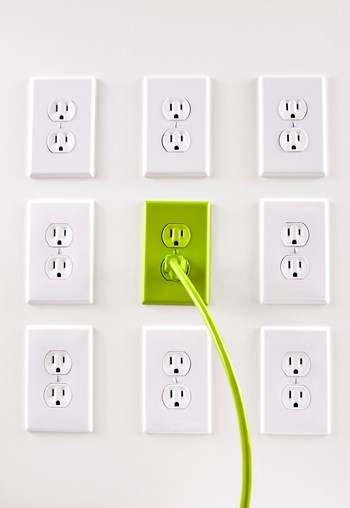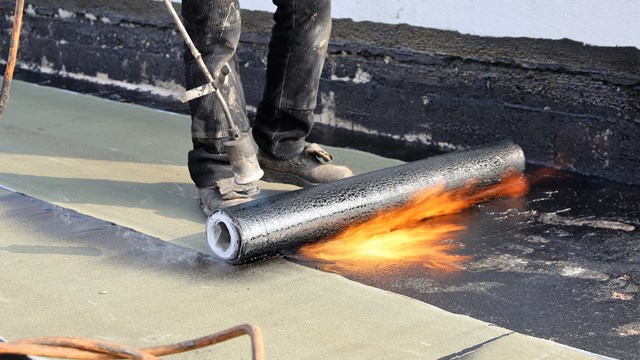
Green is the color of the new millennium. With global warming becoming a global reality, changing weather patterns, melting ice caps, fuel costs rising exponentially due to increased demand, instability in the Middle East, and rusty Alaskan pipelines, the benefits of seeking new, cheaper, renewable sources of energy are obvious.
The case for protecting the environment has never been easier to make—but what does that have to do with homeowners associations? Simple: protecting the environment means, in its most essential terms, using energy more efficiently. And a more efficient use of energy has its rewards even for those more interested in a different shade of green: energy efficiency saves money.
Make HERS Yours
They key to achieving savings in your home or association lies in a holistic, whole-house energy efficiency plan. A building - whether a multifamily high-rise or a single-family townhome—is an energy system with interdependent parts. Your heating system, whether radiant or forced-air, is not just a furnace; it's the entire system that delivers the heat from the furnace, and that includes your ductwork, your insulation, and even your windows.
The highest-speed Internet connection known to man will bog down under an inadequate processor, and even the most tricked-out iPod can only crank stadium speakers so much. The same is true for heating and cooling systems. The best furnace money can buy will still burn a lot of fuel if the ducts, walls, windows, doors and especially the attic of a home are not well insulated. Taking a whole-house approach to saving energy ensures that dollars you invest are spent wisely.
The state of New Jersey certifies certain homes as energy-efficient as part of the federal Energy Star program (your air conditioner may well be emblazoned with the Energy Star logo). To receive certification, a home must reach 85 or fewer points on the Home Energy Rating System (HERS) scale, a nationally-recognized standard for rating energy efficiency. In order to ensure that a home meets the criteria, a utility representative will work with homeowners and/or builders to select the appropriate mix of energy-efficient upgrades and to ensure proper building practices are followed. In addition, the state offers technical advice during construction visits and will perform a final rating once new construction is completed.
"Energy Star is a thorough system," says Steve Leone, principal of Cubellis Ecoplan Architects in Freehold and the current chair of the New Jersey chapter of the U.S. Green Building Council. "It's a combination of many factors: exterior walls, the amount of insulation, the mechanical system. It's a total package."
Because of the holistic approach, in many cases the renovations required to achieve the coveted Energy Star stamp of approval—special heating systems that require floors to be ripped up, insulation that mandates tearing down walls and replacing drywall, and so forth—are prohibitive, particularly for large existing buildings like condominiums and cooperative housing. Indeed, the rating is best achieved when building a complex from scratch.
"Can I just put in energy efficient windows and get Energy Star?" Leone says. "No."
But that doesn't mean there aren't steps both homeowners associations and individual owners can take to improve their energy efficiency—and their bottom line.
So what can homeowners associations do to get more efficient?
"At the time of the budget and throughout the year, do Q&As for the owners, and point out how much money is spent on energy costs, and how individuals affect those costs," suggests Edward Corless, regional vice president of active adult services at The Wentworth Group, a property management firm, headquartered in Pennsylvania with management offices in New York and New Jersey.
"In high rises there's a lot of spared heating expenses. In other types of condos, the energy is shared by the operation of pools or common areas. It doesn't make sense to air condition a room with a capacity for a hundred people just so two people can play cards."
Rick Fry, a property manager and principal of RCP Management in Princeton, suggests using newsletters and websites to disseminate information on cost-saving and energy-saving programs. It is interesting to note that most homeowners associations don't encourage conservation—they have enough on their collective plate.
"Maybe they should," Fry says. "They could send out a list of recommended brands for light bulbs and air conditioners and that sort of thing."
He also suggests forming a committee to study just how specific homeowners associations can save both money and energy.
"Especially in mid-rise and high-rise buildings where there are boilers and lots of common areas," Fry continues. "Committees should be formed to look at ways to conserve and to negotiate costs on use."
Corless notes that some homeowners associations already have such committees, although they operate on an ad hoc basis, convening every so often rather than every year.
"Should an energy committee be formed? Where energy costs make up a greater percentage of the budget—say 25 percent or more—absolutely."
Committees can negotiate with vendors and contractors, he says. In older buildings, they can develop policies to offer incentives to replace old fixtures. For example, a building may contract with a local plumber to get a bulk discount to replace commodes. And the committee could offer, say, a $100 maintenance discount to everyone who replaces their toilet.
"The new toilets use a lot less water per flush," Corless explains, adding that the water-per-flush ratio is—insert your money-down-the-toilet joke here—government regulated. "By replacing them, you might save a dime per flush per day. In some high-rise buildings, you have 1,000 fixtures. Over the course of a year, that saves you a lot of money."
The same thinking can be applied to all areas in which money can be saved: electricity, gas, lighting, etc. Streetlights can use more energy-efficient bulbs. Clubhouses can be opened fewer hours, to conserve heating and cooling costs. Those fancy fountains that dazzle our eyes don't have to run round the clock—shut them down at ten at night and fire them back up at seven in the morning, and no one will be the wiser.
"Switching to fluorescent bulbs has a significant impact on common areas," Corless says. "They cost more initially but last longer and are cheaper to maintain."
In light of overall fossil fuel consumption in the United States, swapping out light bulbs may seem like a paltry tactic with little to no meaningful impact on power usage and expenditure—but nevertheless, it works.
A final step homeowners associations can take is to employ independent energy consultants to review their energy plan.
"They ensure that the utilities have been billing properly—they make mistakes, too," says Fry, "but they also look at consumption in the building, offer ways to reduce consumption."
Corless concurs. "If you're paying 40 to 50 percent of your budget on utilities, you should use an energy consultant on a regular basis," he advises.
Think Cooperatively, Act Locally
Conservation begins at home. What can individual homeowners do to save energy?
"It's no different than what our parents and grandparents used to do," Leone says. "Shut the lights off, shut the TV off. You'd be surprised how much of it is common sense."
He also suggests checking to make sure your building or unit is properly insulated, replacing old windows with insulated ones, using the aforementioned fluorescent bulbs, and changing filters in air conditioners often.
"All the incremental renovation that you can do, do," he says. While the piecemeal method won't earn Energy Star rating, it does make a difference.
Because of shared wallspace—and because the units are often smaller than detached houses—condos and co-ops can be inherently more energy efficient, compared with other dwellings.
"It's difficult when we have bigger houses," Leone says. "We have houses with more square footage than ever before, and the family size is shrinking. Do we really need that much space? That's not energy efficient."
While condos and co-ops will probably not be able to make sweeping changes like shifting to geothermal heating and cooling systems, and while wholesale renovations on such large buildings is often cost-prohibitive, even small changes make a difference to the bottom line. As the old saying goes, every little bit helps.
Follow the Sun?
Are more radical solutions the wave of the future? Could an avant garde condo complex harness the power of the sun?
"There's usually restrictions on extreme modifications," Fry notes. "Will be start to see exceptions for things like solar panels to be installed? Soon, we'll have to look at it."
There are two stumbling blocks to converting to solar energy, Leone says. The first is the cost—it can take up to twenty years to recoup the initial investment (although during those twenty years you'd be using a lot less oil or gas). The second is that the houses must face south, so the panels can be properly installed.
The communal aspect of condos and co-ops could, in theory, prove a boon to solar power, as it would help alleviate the cost by spreading it over more people and the installation by offering more south-facing structures to choose from. Whatever happens, energy is the Next Big Thing.
"It's inevitable that the focus on energy conservation will be at the forefront of our imaginations," Fry says.
Greg Olear is a freelance writer living in New York.






Leave a Comment